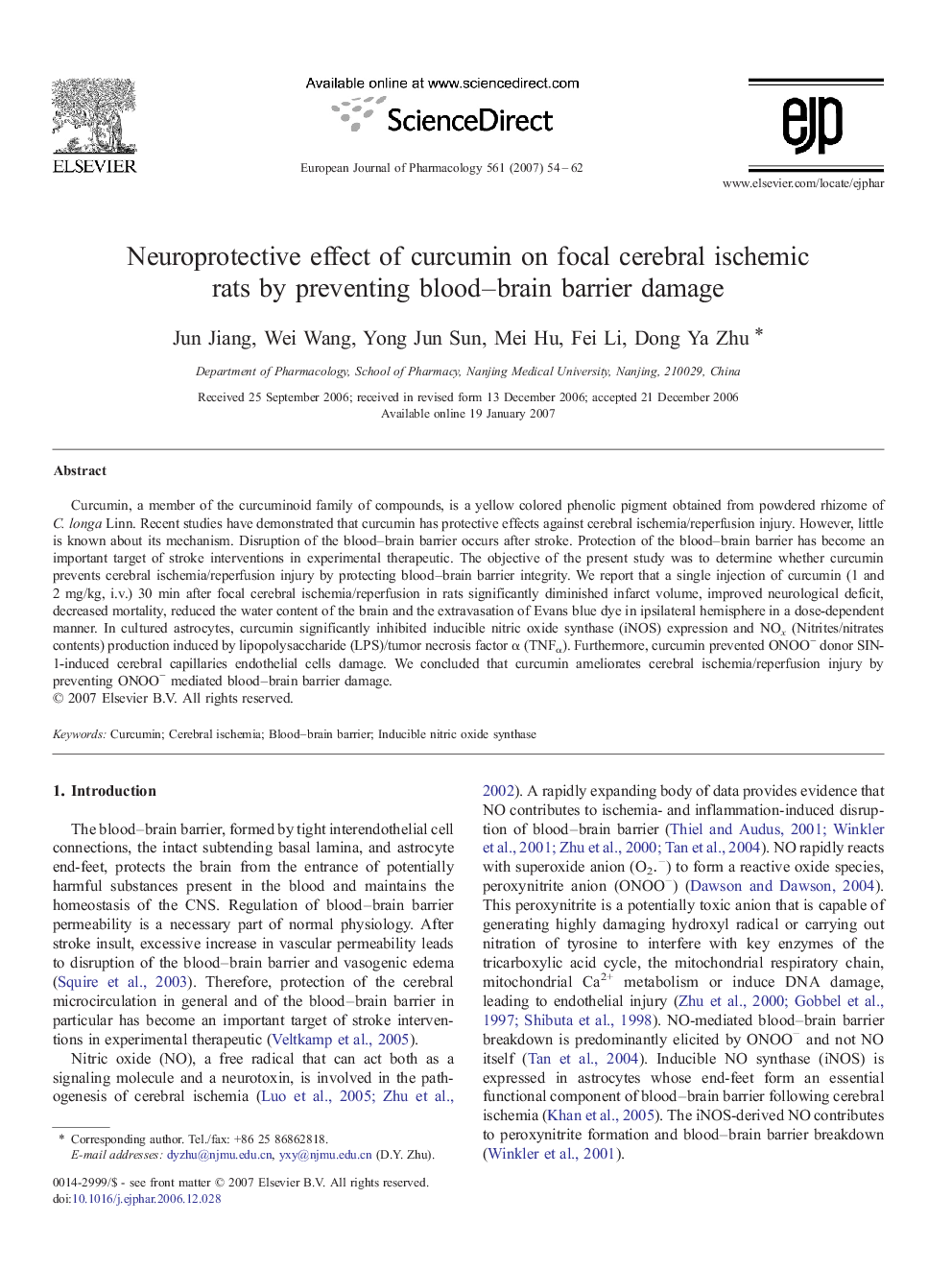| Article ID | Journal | Published Year | Pages | File Type |
|---|---|---|---|---|
| 2536271 | European Journal of Pharmacology | 2007 | 9 Pages |
Curcumin, a member of the curcuminoid family of compounds, is a yellow colored phenolic pigment obtained from powdered rhizome of C. longa Linn. Recent studies have demonstrated that curcumin has protective effects against cerebral ischemia/reperfusion injury. However, little is known about its mechanism. Disruption of the blood–brain barrier occurs after stroke. Protection of the blood–brain barrier has become an important target of stroke interventions in experimental therapeutic. The objective of the present study was to determine whether curcumin prevents cerebral ischemia/reperfusion injury by protecting blood–brain barrier integrity. We report that a single injection of curcumin (1 and 2 mg/kg, i.v.) 30 min after focal cerebral ischemia/reperfusion in rats significantly diminished infarct volume, improved neurological deficit, decreased mortality, reduced the water content of the brain and the extravasation of Evans blue dye in ipsilateral hemisphere in a dose-dependent manner. In cultured astrocytes, curcumin significantly inhibited inducible nitric oxide synthase (iNOS) expression and NOx (Nitrites/nitrates contents) production induced by lipopolysaccharide (LPS)/tumor necrosis factor α (TNFα). Furthermore, curcumin prevented ONOO− donor SIN-1-induced cerebral capillaries endothelial cells damage. We concluded that curcumin ameliorates cerebral ischemia/reperfusion injury by preventing ONOO− mediated blood–brain barrier damage.
